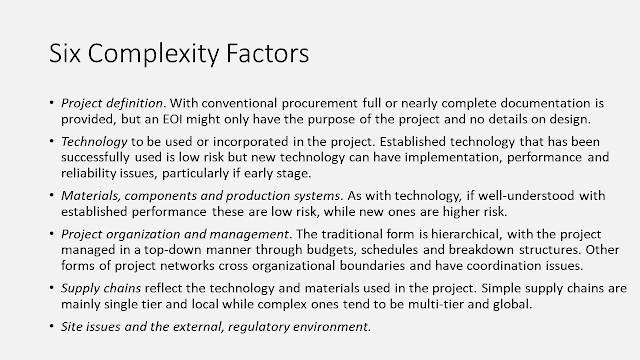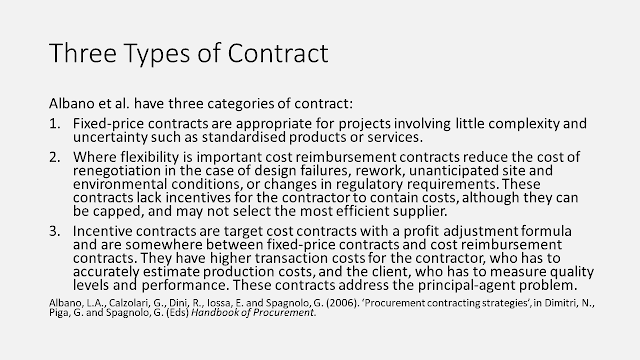An
industry with a deep layer of specialised firms that form a dense network of
producers, suppliers and materials was called a ‘technological system’ by Thomas Hughes:
Technological systems solve problems or fulfill goals
using whatever means are available and appropriate; the problems have to do
mostly with reordering the physical world in ways considered useful or
desirable, at least by those designing or employing a technological system
(Hughes 1987: 53).
Hughes was an engineer and historian of technology, who saw technology as “craftsmen, mechanics,
inventors, engineers, designers and scientists using tools, machines and
knowledge to create and control a human-built world”. Technological
systems are, for Hughes, the key to understanding technological change. He
studied the development and evolution of electric
light and power between 1870 and 1940, and wrote a history of the industry. He
saw these large, modern technological systems evolving in a loose pattern: “The
history of evolving, or expanding, systems can be presented in the phases in
which the activity named predominates: invention, development, innovation,
transfer, and growth, competition, and consolidation”. As systems mature, they
acquire style and momentum.” (Hughes 2004: 65).
When
viewing the construction industry as a technological system, the age of the
system is the most obvious feature. Most of the various elements of the modern
industry came together over the nineteenth century, pushed along by ever larger
and more complex projects building canals, roads, bridges and tunnels,
railways, factories, offices and housing. During the 1800s the world was
urbanising as population rapidly increased and major cities attracted migrants
and businesses. In the second half of the century heavy industry and
manufacturing spread around the world, from England and Western Europe to
America then Japan. New industries needed new types of buildings, typically
larger, higher and stronger than traditional methods and materials could
provide. Bowley (1966) for the UK and Fitch (1966) for the US
are well known histories.
It’s a
remarkable fact that the building and construction industry we have today is a
technological system that has been developing for 150 years. As a mature
technological system, this can be expected to be in many places a quite
concentrated industry, run mainly by finance and management types, and having a
high degree of technological lock in due to the age of the system. Many of the
industry’s global leaders are well-established, Bechtel for example is over 100
years old, and others like Hochtief, Skanska, and AECOM can trace their origin
stories back over a similar period. Shimizu is over 200 years old.
Building and construction as an industry cluster has quite different
characteristics to the industries studied by Thomas Hughes, and how the modern
form of the industry developed over the twentieth century is another
interesting story in its own right. The most obvious difference to the
industries used as examples by Hughes is the size and diversity of building and
construction, because statistics on the industry includes the enormous number
of firms and people engaged in the alteration, repair and maintenance of the
built environment as well as contractors and suppliers for new builds. The
broad base of small firms is a distinctive feature of the overall construction
industry as we define it. However, the part of the industry that is engaged in
delivering projects (that is, part of a problem-solving technological system)
is made up of larger firms than this long tail of small, typically
family-owned, businesses.
With industrialised production, prices of manufactured goods decline
over time as economies of scale and scope kick in, and over time those cheaper
prices allow new technologies to spread and find new uses. Moore’s Law and the
price/performance relationship of computers is athe best known example. An
example of this price effect in building and construction was machine-made
nails. Originally nails, like everything else, were hand made, and in fact were
more expensive than screws, “but by 1828 the cost was down to 8c per pound [two
kilos] and in 1842 to 3c. Dimensioned lumber and cheap nails made possible a
whole new order of speed and economy in wood framing.” (Fitch 1966:121).
Combining these two innovations a new system of building known as the ‘balloon
frame’ came out of Chicago in the 1840s, and with nailed light timber frames
two people could do the work of twenty using traditional methods. This very
large increase in productivity came from two relatively simple innovations
that, together, had a major impact. Balloon frames were sold in catalogues in
many styles, and were used to build the new railway towns and suburban housing
spreading across America over the following decades. This highlights the
importance of understanding how a combination of new innovations within a
technological system is often more significant than the individual new
technologies themselves.
This also highlights the fact that the single most important
factor in technology uptake is the price/performance relationship, or the gain
in productivity or other measure (time, quality, safety, choice) the new
technology delivers for a given level of investment. To successfully displace
an older technology a new technology has to provide an overwhelming economic
advantage to overcome the inbuilt conservatism of an existing industry, due to
the investment by incumbents in the current system.
Between 1800 and 1900 there were a
series of technological shocks to building and construction, as the new
materials of iron, glass and concrete opened up opportunity and possibility for
designers, for both what was built and how it was done. Iron and steel divorced
the building frame from the envelope between the Crystal Palace in 1851 and the
rebuilding of Chicago after the Great Fire of 1871, and with the separation of
the frame from the envelope came mass produced infill materials to replace
load-bearing construction. Then the combination of steel and concrete made
possible the development of reinforced concrete and steel skeleton structures.
Both ‘building art and the art of building’ were transformed, not once but
several times, over these years as the methods of industrialised building with
iron, steel and reinforced concrete were refined.
Over the 1800s the increasingly
widespread use of concrete had changed its status from hobby or craft to a
modern industry, as scientific investigation into its material properties
revealed its shear and compressive characteristics. With the development of
reinforced concrete there was change in architectural concepts of structures
and approaches to building with concrete. The industrial standards of concrete
technology influenced ways of thinking based on building systems and
standardized building elements, and became identified with what was known as
the Hennnebique System, a simple to use system of building with reinforced
concrete columns and beams patented in 1892. According to Pfammatter (2008), by
1905 this system had spread across Europe and elsewhere, and Hennnebique’s
company employed 380 people in 50 offices and had 10,000 workers. Concrete then
set the agenda for the development of the construction industry as a
technological system over the next hundred years, driven by the modernist
movement in architecture, which explored the possibilities of these materials,
and the increasing height and scale of buildings.
In these examples the relationship
between technological change, conceptual thinking and organisational form is
clear. While the striking thing is the interrelationship of these three
aspects, the driver of these changes is technology, or more precisely new
technology that fundamentally changes existing industry practices and delivers
a shock to the existing system. With the advent of iron-framed and reinforced
concrete buildings the construction industry had to not only master the use of
these new materials, but also develop the project management skills the new technology
required. That organisational change, in turn, was based on the deeper change
in the way of thinking about the world that was fundamental to the industrial
revolution and the invention of the scientific method (Landes 1972).
So, why would be experience of the industry over 100 years ago be
relevant today? There are two parts to the answer. The first is that the
nineteenth century is the only other period of disruptive change we have for
comparison. The second is that the effects of technological change on industry
structure and performance might plausibly again be in the same key areas as the
organisation of projects and the mechanisation of processes, but in the
twenty-first century these effects will be heightened and quickened by the
network effects associated with digital platforms and artificial intelligence.
Because industry structure (the number and size of firms) is fundamentally
determined by technology (Sutton 1999), the emergence of new technologies and
periods of rapid change can lead to new industries, but can also extensively
restructure existing industries (Kamien and Schwartz 1982).
The construction technological system is extraordinarily wide and
diverse, and the various parts of the digital construction technological system
are in various stages of development. There are very many possible futures that
could unfold over the next few decades. However, it is clear that the key
technology that underpins these further developments, and upon which new
combinations of technology will be based on, is intelligent machines operating
in a connected but parallel digital world with varying degrees of autonomy.
These are machines that can use data and information to both interact with each
other and work with humans, and importantly this digital world will be one
designed and built by humans. We are at the point where intelligent machines
are moving from operating comfortably in controlled environments, like car
manufacturing or social media, to unpredictable environments, like driving a
car or truck. In many cases, like remote trucks and trains on mining sites, the
operations are run as a partnership between humans and machines, as the saying
has it “running with the machines not against them”.
The impacts of new technology on a mature technological system
like the construction industry are generally thought to be gradual, changing
industry practice over time without significantly affecting industry structure
or dynamics. There are good reasons to think this may be wrong because of the
current surge in advances in machine learning and the broadening potential of
AI. A period of rapid restructuring of the industry similar to the second half
of the 1800s may be about to start, when the new materials of glass, steel and
reinforced concrete arrived, bringing with them new business models, new
entrants and a greatly expanded range of possibilities. In the various forms
that AI takes on its way to the construction site it will become central, in
one way or another, to all the tasks and activities involved. In this, building
and construction is no different from all other industries and activities, but
the path of AI in construction will be distinct and different from the path
taken in other industries. This path dependence varies not just from industry
to industry, but from firm to firm as well.
The full conference paper Construction as a Mature Technological Sysytem can be downloaded here or read on ResearchGate here.










































